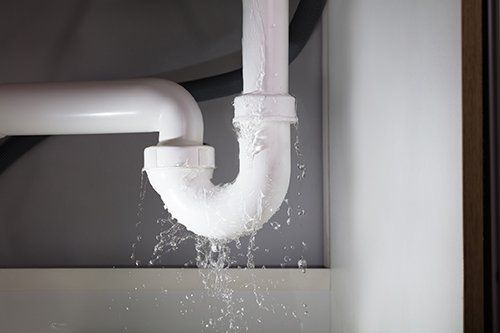How to Stop the Six Most Common Water Leaks in Your Home
How to Stop the Six Most Common Water Leaks in Your Home
Blog Article
The writer is making a few good pointers on the subject of How to Find Water Leaks overall in the content further down.

Leakages not only trigger waste of water but can also create unnecessary damage to your house and advertise undesirable organic growth. By looking and also recognizing for everyday situations that create leaks, you can safeguard your residence from future leaks and also unnecessary damages.
Instant temperature changes.
Extreme temperature changes in our pipelines can cause them to broaden and acquire all of a sudden. This growth as well as tightening may create fractures in the pipes, specifically if the temperature are below freezing. If you kept an eye on exactly how your plumbing functions, it would be best. The visibility of the previously pointed out circumstances regularly indicates a high danger.
Rusty water systems
As time goes by, your plumbing system ages and deterioration such as corrosion may begin gnawing the pipes. This may be the source of discoloration or warping on your pipes. This requires an examination with your plumber promptly. If our plumbing system is old, consider replacing the pipes because they go to a greater danger of rust than the more recent versions.
Malfunctioning Pipeline Joints
The point at which your pipes connect is frequently the weakest link in the waterline. Pipeline joints can deteriorate over time, resulting in water leaks. The bulk of pipeline joints are not quickly noticeable. If you have noisy pipes that make ticking or banging noises, especially when the warm water is switched on, your pipe joints are most likely under a lot of pressure. It is advisable to have your plumber inspect your system once a year.
Elbowing in origins
A lot of water leaks start outside the house rather than inside it. If you see an unexpected decrease in water stress, claim in your faucet, take time to head out and examine your backyard. You may discover damp spots or sinkholes in your lawn, which may imply that tree roots are attacking water lines triggering water to seep out. You can have your plumber look for invasion, specifically if you have trees or bushes near your building.
Poor Water Connectors
At times, a leakage can be triggered by loosened tubes and pipelines that supply your devices. In case of a water links leakage, you might discover water running straight from the supply line or pools around your home appliances.
Obstructed Drains
Clogged drains pipes may be annoying as well as inconveniencing, yet they can in some cases wind up creating an overflow resulting in break pipelines. Maintain getting rid of any materials that might go down your drains that might obstruct them to prevent such troubles.
All the above are causes of leakages however not all water leakages arise from plumbing leaks; some leaks could originate from roofing system leaks. All leakages need to be fixed instantly to prevent water damages.
Leaks not only trigger waste of water however can additionally create unneeded damage to your home as well as advertise undesirable natural development. By understanding and looking for everyday circumstances that trigger leakages, you can secure your home from future leaks and unnecessary damage. Today, we will look at 6 leakage triggers that might be triggering your pipelines to trickle.
At times, a leakage can be caused by loosened hoses and pipes that provide your devices. In instance of a water links leak, you may notice water running directly from the supply line or puddles around your appliances.
How To Check For Water Leak In Your Home
How To Check for Leaks
The average household's leaks can account for nearly 10,000 gallons of water wasted every year and ten percent of homes have leaks that waste 90 gallons or more per day. Common types of leaks found in the home are worn toilet flappers, dripping faucets, and other leaking valves. These types of leaks are often easy to fix, requiring only a few tools and hardware that can pay for themselves in water savings. Fixing easily corrected household water leaks can save homeowners about 10 percent on their water bills.
To check for leaks in your home, you first need to determine whether you're wasting water and then identify the source of the leak. Here are some tips for finding leaks:
Take a look at your water usage during a colder month, such as January or February. If a family of four exceeds 12,000 gallons per month, there are serious leaks.
Check your water meter before and after a two-hour period when no water is being used. If the meter changes at all, you probably have a leak.
Identify toilet leaks by placing a drop of food coloring in the toilet tank. If any color shows up in the bowl after 10 minutes, you have a leak. (Be sure to flush immediately after the experiment to avoid staining the tank.)
Examine faucet gaskets and pipe fittings for any water on the outside of the pipe to check for surface leaks.
Undetected water leaks can happen without the home or business owner even realizing. If you suspect a water leak, but not able to find the source. It is time to contact a professional water leak detection service, The Leak Doctor.
How To Find a Water Leak In Your Home
https://www.leakdoctor.com/blog/How-To-Check-For-Water-Leak-In-Your-Home_AE197.html

I hope you enjoyed reading our piece on Common Water Leaks In House. Thanks for taking time to browse our article post. Don't hesitate to take a moment to promote this post if you appreciated it. Thank you for your time. Visit us again soon.
Booking Report this page